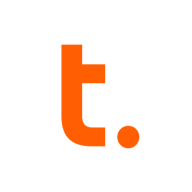

Teradata and Unifi compete in the data analytics and management space, with Teradata having an edge due to its pricing and support despite Unifi's rich feature set.
Features: Teradata offers advanced analytics, robust scalability, and data science capabilities, making it suitable for complex data environments. It handles large-scale operations effectively. Unifi provides innovative self-service data integration, praised for intuitive data integration and enabling seamless collaboration and self-service access.
Ease of Deployment and Customer Service: Teradata provides comprehensive setup and extensive professional support, ensuring smooth integration for large organizations. Unifi's deployment is straightforward, with strong customer support enhancing user satisfaction.
Pricing and ROI: Teradata requires significant upfront investment but offers substantial returns for organizations managing extensive datasets. Unifi is cost-effective with a lower initial cost, appealing to businesses seeking rapid value without hefty upfront expenses.


Teradata is a scalable data analytics platform designed to meet enterprise demands for large-scale data management and processing, focusing on performance, scalability, and security for complex query executions.
As a leading data warehousing solution, Teradata integrates advanced analytics enabling organizations to derive insights from massive datasets. It supports high-volume data workloads with its architecture optimized for analytical queries. Users benefit from its robust scalability, allowing seamless expansion as data grows. Teradata's SQL engine is compatible with a wide range of data types, ensuring flexibility in data analysis. With advanced security measures, it protects sensitive data across various environments, providing peace of mind to users handling critical information.
What are the most important features of Teradata?Teradata is widely used in industries like finance, telecommunications, and healthcare, where data-driven decisions are critical. Companies leverage its robust analytics capabilities to enhance customer experiences, streamline operations, and ensure compliance with regulatory requirements. In these sectors, quick access to data insights can significantly impact competitive advantage.
The Unifi Data Platform breaks down the barriers of operational data silos and democratizes information across the enterprise. At the heart of the platform is a comprehensive suite of self-service data discovery and preparation tools to empower business users. Employing machine learning and artificial intelligence technologies, and optimized for the cloud, Unifi predicts what the business user wants to visualize and then connects the resulting data natively to the BI tool for fast, accurate results.
We monitor all Data Integration reviews to prevent fraudulent reviews and keep review quality high. We do not post reviews by company employees or direct competitors. We validate each review for authenticity via cross-reference with LinkedIn, and personal follow-up with the reviewer when necessary.